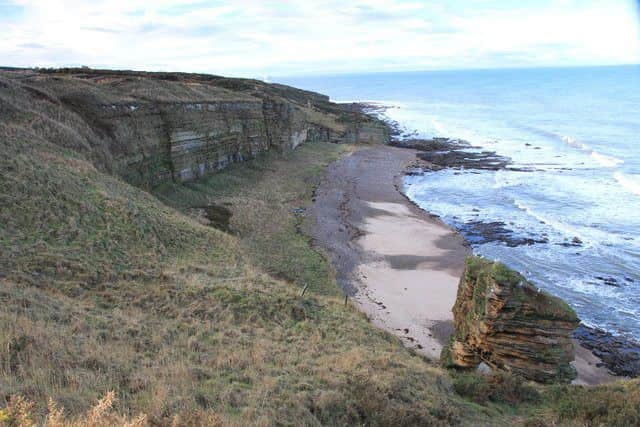The coastal cave littered with human remains


Sitting at the foot of soaring cliffs close to Covesea on the Moray Coast, the cave is cut off by tides for long periods of time with a boat usually required for the often hazardous trip.
The cave was described as a place that the “sun never touches” by archaeologist Sylvia Benton who carried out the first detailed excavation there in 1929.
Advertisement
Hide AdAdvertisement
Hide AdThat also seems fitting, given the cave served both as a form of mortuary, mostly for children, and later as a place of ritual killings.
The cave has a long history of use from the Late Bronze Age, around 1,100BC, to the Pictish era and it is believed that at one point people travelled from all over the north - and perhaps even Ireland - to get here.
Its isolated position may have further enhanced its importance, it is believed.
Several archaeological investigations have taken place at the site with evidence of Bronze Age occupation - such as armlets, ring money and a swan’s neck pin - all discovered.
Crucially, a “very large” quantity of human remains, mainly of the young, have been found over time according to the Scottish Archaeological Research Framework.
A line of children’s heads may have been displayed at the entrance to the cave, given the pieces of skull and mandible found in the entry passages.
A report by SARF suggested the cave acted as a bridge between the “upper world and the underword” for those who came here.
Advertisement
Hide AdAdvertisement
Hide AdIt said: “The very nature of this site – a cave that was often difficult and dangerous to access – is likely to have made this a highly appropriate location for the undertaking of ritual practices.
“A dark and frightening place situated between land and sea, the upper world and the underworld, this was a liminal location in which rites of passage – transforming children to adults or the living to the dead – may have taken place.
“It may also have provided an access point to the gods or spirits of the underworld.”
Later, Sculptor’s Cave, which is named after the Pictish-era carvings on the wall, was used as a place for decapitation during the Roman Iron Age.
Dr Lindsay Buster, post-doctoral research assistant at Bradford University, wrote about the cave earlier this year.
In an article for the Remember Me project, which looks at different ways of memoralising the dead, she said: “No doubt, the ritualised killing of individuals in the Roman Iron Age drew on past associations of this place with the dead.
“We cannot know for certain the reasons behind the decapitations, but they took place at a time of political upheaval after the withdrawal of Roman military from the north of Britain and the subsequent instability of local rulers and ‘client kings’ whose power and legitimacy they protected.”
Advertisement
Hide AdAdvertisement
Hide AdEarlier research found the Pictish symbols are commonly found in pairs with some suggesting they might represent personal names or other attributes such as ‘strength’ or ‘courage’.
Dr Buster suggested the symbols may have been drawn retrospectively to remember those who had been beheaded there.
Historic Environment Scotland and the Society of Antiquaries Scotland has funded further studies at the site.
The team from Bradford University are now looking at whether Sculptor’s Cave is part of a wider mortuary complex on this stretch of coast.
A major report on the site is due out next year.l